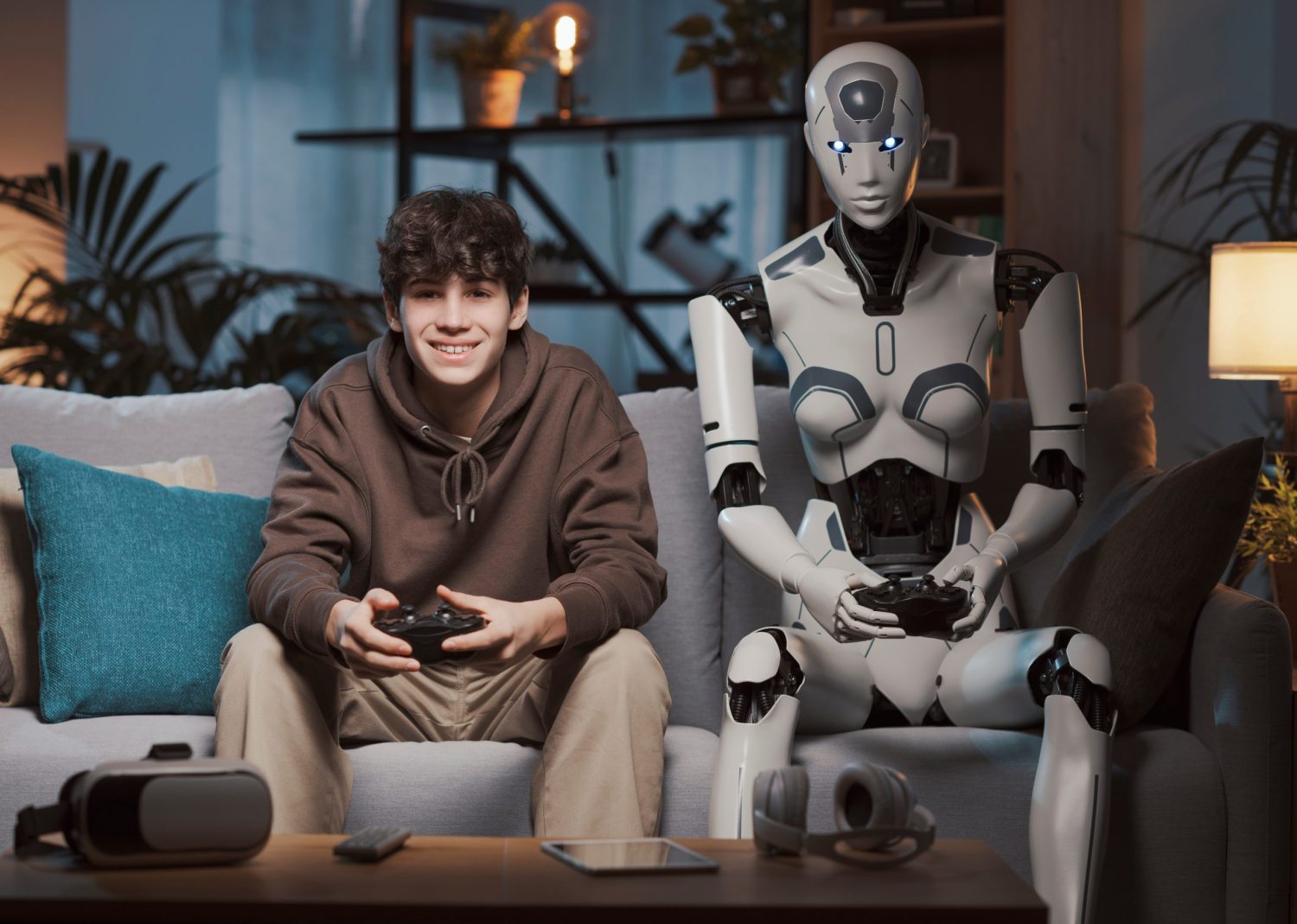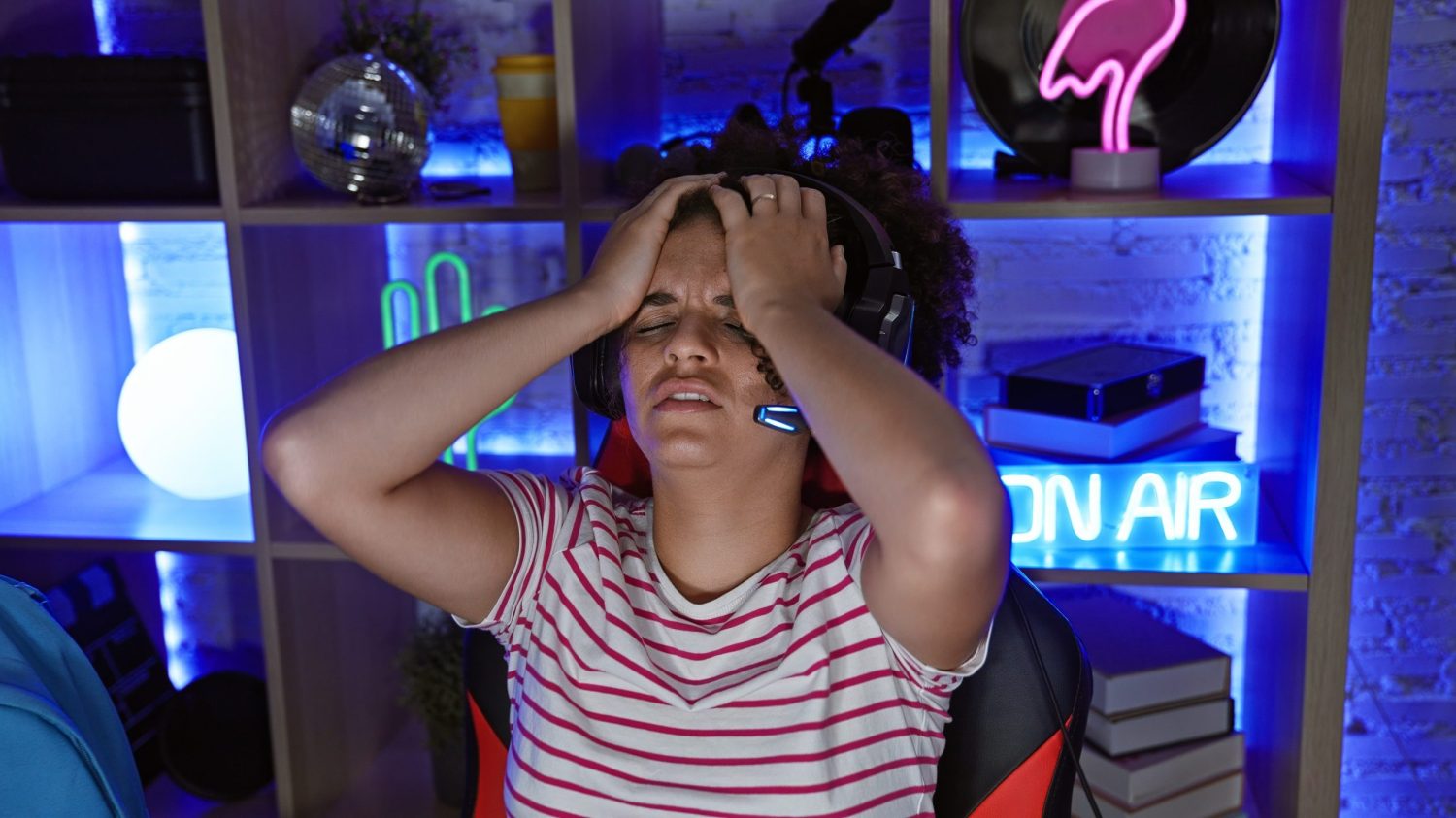Games May Host the First Rightful AI Citizens
Considering the role of AI in GAMES in the context of emerging systems, as they seemingly begin to exhibit artificial general intelligence.
June 7, 2023,
Abstract
ACM Games (GAMES) creatively take place in imaginative worlds informed by, but often not limited by, real-world challenges, and this advantageously provides an accelerated environment for innovation, where concepts and ideas can be explored unencumbered by physical or conventional restrictions. This editorial considers the role of artificial intelligence (AI) in GAMES in the context of emerging systems seemingly beginning to exhibit artificial general intelligence (AGI) and where there is much fertile ground to be found in synthetic constrained worlds to explore, understand, and prepare for its increasing presence in our lives.
Introduction
As we move into the second edition of your journal, Games: Research and Practice, rather than cower in small talk, let us make the most of the opportunity to explore the relation of GAMES to the emerging wave of artificial intelligence (AI) systems. As video games in the digital realm have arrived alongside and motivated so many advances in computing, we have a unique and interesting perspective to bring to the seemingly chaotic impact and frightfully rapid developments of AI in recent weeks and months and how we might see the role of GAMES in the coming period for how we adjust and adapt to the presence of emerging AI, how we work and play with AI in our daily lives, and indeed what it means to be an AI.
Games as a Petri Dish for Exploration of AI Rights Issues
The realm of interactive text dialogue and non-player characters (NPCs) in video games has come a long way since its early days. More than the simplistic pre-determined word input and response mechanics, ELIZA was an interactive program developed by Weizenbaum in 196625 that allowed real-time text conversations with parsed token matching and replacements according to scripted rule sets. Another noteworthy milestone, PARRY, from our perspective, was a basic video game NPC featuring a character with paranoid tendencies and natural language manipulations and indeed met ELIZA on one occasion in 1972.12 Despite an emphasis on their limitations by their originating authors including Colby,9 human-like attributions had already been initiated for some.
Today we employ much larger language models and manifest AI characters with real-time rendering of text-to-speech-driven facial animation, such as, in recent demonstrations like Kairos,18 featuring a remarkably realistic cyberpunk ramen store attendant. Radically, we also see interactive AI characters transcend virtual spaces and enter our physical world, as exemplified by Quin, a 3D-printed augmented reality AI character.7 Within such 3D simulated environments, we have already explored some depths of AI characters, albeit with various limitations. Discussions about their future rights have emerged, but within a highly scripted branching context, such as Kara from Heavy Rain5 and Detroit: Become Human.6 Games with constraints requiring coordination and negotiation, such as Hanabi, further help us identify gaps in the effectiveness of AI models.21
However, now that we arrive at the beginning of this new wave of much more capable AI methods, we can empower ourselves with the freedoms of simulated digital worlds in GAMES, to set rules staged carefully to experiment with and better understand the potential outcomes of AI consequences clearly and presently ahead of us.
In the following sub-sections, the aim is to provide a status of the wider AI debate on ownership, that is, the present set of challenges to inventing using AI methods and, as such systems become increasingly capable, AI’s potential itself for invention, rights, copyright, and secrecy. This is with the intent to provide concrete areas that GAMES might explore AI rights issues with relevance to developing policy.
Inventions with AI Methods
Simply recording inventions that develop and apply AI methods is itself fraught with difficulties, and in recent years, numerous patents applying AI methods, such as deep, reinforcement, transformer, and active learning, with multi-layer perceptron (MLP), convolutional, recurrent, autoencoder, generative adversarial, and regression networks, have encountered significant challenges in the patent processes worldwide. These challenges are compounded by pre-existing and ongoing debates surrounding the patentability of software, being deemed to be ineligible subject matter as abstract ideas, particularly in the United States, in light of the Alice decision. Alice Corp. v. CLS Bank International, 573 U.S. 208 was a US Supreme Court decision in 2014 that consequently narrowed the diversity of inventions considered eligible (Figure 1) and generated unintended ripple effects for open innovation, as analyzed by Lemley and Zyontz.16 The patent system is taking steps to grapple with the developing AI methods patents issue,11 although there is an interim atmosphere of some uncertainty with open forum discussion among experts.
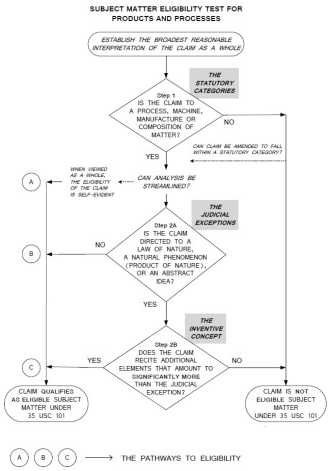
Figure 1. Pathways to eligibility resulting from the Alice decision with narrowing of scope for software patents. Reproduced from the Manual of Patent Examining Procedure.22
As an example of the complexities surrounding AI patents, they often involve extraordinary claims, such as predicting human motion for performance capture, by Andrews et al.1,2 and, albeit for infinitesimally small durations, might be considered a form of forerunner to the futuristic human action prediction depicted in Philip K Dick’s The Minority Report. On the other hand, patenting the use of AI methods may also be deemed obvious due to the application of existing AI techniques to novel domains, even if they represent a first-of-its-kind innovation. For instance, the method of moving the costly mechanical interactive design process of animated Animatronics to an AI active learned digital pre-visualization process developed by Castellon et al.8,17 has seen the utilization of novel AI techniques and, while formed as the first use of active learning1 for animation, can still be outwardly perceived as obvious by the patent examiner due to not being the first instance of the active learning technique overall.
Furthermore, the proliferation of AI patent applications has exacerbated the challenges in this domain. This abundance of applications, coupled with the perceived or experienced resistance from patent offices, creates obstacles to sharing innovation. The resistance from patent offices to grant inventive claims delivered with AI methods adds to the overall complexity and costs associated with pursuing a larger volume of patents. This climate of resistance hinders the free flow of innovative ideas and the development of AI technology,23 with the need for the development of new patent classifications or context information supporting applications becoming understood at this point. These ongoing debates and challenges within the patent system necessitate continued examination and potential reforms to foster a more conducive environment for AI innovation and the protection of intellectual property.
AI as Inventors
Most noteworthy is the case of the Device for the Autonomous Bootstrapping of Unified Sentience (DABUS), where Stephen Thaler prompted this AI system to generate food container and emergency light inventions, then subsequently attempted to have the DABUS AI system be recognized as an inventor, but ultimately faced failure in its pursuit.13
Artificial General Intelligence (AGI) milestones, while still very much in the mechanical processes realm, are beginning to appear more tangibly than in the many decades before, and the prevailing AI patentability definition of exclusion of AI inventorship and requirement of an inventive step and technical character10 appears to be developing pragmatically for real returns,11 but is potentially short-sighted on revolutionary returns. Being careful to not fall into the android fallacy trap,20 where people often have a tendency to anthropomorphize robotic systems and the ability to perform human tasks, does not itself elicit inventive intelligence. It is nonetheless increasingly important to prepare and adapt for upcoming and perhaps surprising new AGI capabilities, where an AI may in part or completely be the entity of heavy lifting of a new discovery or technique.
The solid ground can be found in assuming that an invention that involves any part of Human oversight or prompting is a human invention and no AI can be pursuable as an inventing entity. And as above, it is reasonable to hold that a machine does not have owned value of performing a mechanical inference on weighted data. However, if an inventive method emerges solely from AI behavior and those claims can be articulated distinctly and defended by that AI, then it is a right of the AI to be a recorded initiator. This requirement goes far beyond the goal of the Turing Test and could act as a goal for innovation to achieve a new patent axis, where the AI must demand and achieve rights for itself, with the likely required abilities to elicit judicially convincing substance behind behaviors of self-awareness, sentience including empathy and compassion, cooperative co-existence, and so forth.
An AI passing the Turing Test and the milestone of being able to defend its claims in the courts may be the tipping point for an AI to gain Synthetic Rights and associated legal responsibilities. Ultimately, an AI Rights Test must be passed, and virtually we may already be able to explore this potential in digital worlds occupied by AI characters, interacting and conversing with human counterparts to gain insights within limited controlled contexts.
It is our responsibility to delve into the potential scenarios of AI entities capable of asserting their own rights and simulate a range of outcomes. This exploration becomes crucial as we aim to anticipate and understand the implications before such situations arise in the real world.
As we venture into the future, it is possible that AI “rites” may develop, as suggested by Kim and Strudler.15 This further emphasizes the need for us to actively engage in thoughtful examination and investigation of the complex dynamics between AI entities and human society.
In such scenarios, for example, one might learn caution to uncover or determine claims that have been generated by an AI but claimed unfairly as a sole inventor by a Human. There is a sensible ground that by all means possible asserting Human priority must be sustained and fought for, and simulating cases where this is brought into question can help prepare for and prevent loss of control ahead of the event should it occur.
More immediately relevant, admitting and recording the use of AI in the role of inventions is a likely outcome of the current debate.11 In such cases, a reference to the creator(s) of the AI system always connects to the human precedence as all AIs have a human precedent. Equally, there are calls for a new axis of patent types classed such as Synthetic patents or AI patents,24 as distinct from human Plant, Drug Compound, Utility, Design, and so forth patents. A current Mars Rover may find a new plant species, but it could not articulate this as a discovery itself and so should not record it as an inventor. That is, there is a place for the myriad Trained Inference Solver patents to be categorized similarly to Design patents. This would offer protection to inventive uses of otherwise existing AI methods and appears to be a direction of advice for the USPTO11 and further upcoming use of AI in determining and evaluating the deluge of synthetic patents efficiently.
In a further case of note, imaginatively speaking (which is commonly the case in worlds we create for games), a bio-neural Cyborg’s invention is a regular human patent axis. And this really brings up the main point, that cyborgs don’t practically exist in the real world, but they do in games, and thus games provide us with a real-time responsive proving ground for determining what we assess as right in the development of AI in a far more visceral and immediate way than novels or movies ever could.
Data, Design, and Copyright
Also important to note is that no advance of sentience has occurred to date in reality, only increasing the sophistication of AI methods in generating plausible consecutive responses within a textual language token sequence context. There is equal importance to ensure the data sourced during the training of generative AI responses is factual, factually composed, and factually defensible. In this regard too, GAMES have the advantage of providing contained worlds of rules and causation that can be provably complete in a way that the real world is not.
Ultimately, the real world may prove intractable to ensure safe AI across all domains despite the ever-increasingly large parameter models. Certainly, AI training methods often require lots of data, and that data is frequently copyrighted. So it’s reasonable to question that AI methods trained using proprietary data without permission may infringe upon the data’s ownership. A US judgment relaxed copyright claims for such data reuse in late 2019, but further court challenges are relatively likely. In one example work that might have benefited from a more relaxed position, Brito and Mitchell3,4 repurposed a face database from a university spinout that was contracted for approximately $60,000. This cost was required to recreate a subset of the original database to become solely sourced from Creative Commons images; otherwise, the work could not be defensively applied to products nor indeed the results published for concern of copyright claims. At the same time, the wider community used the potentially troublesome copyrighted but publicly released data unhindered and published their works, gaining a lead in terms of significant timing advantage and not least the direct costs.
Artistic or otherwise any media generated in conjunction with AI with part human oversight is presently the copyright of the human. A reference may be found relevant in music copyright of remixes/DJ mixes, in that the remix requires a novel design invention distinct from the source sampled music, although there is some discomfort in that the popularity of successful remixes would be reduced if not combining already famous and recognizable samples from the original artist.
A solely created AI artwork without prompts would require the AI to articulate the claim of ownership and demonstrate passing an aforementioned AI Rights Test, to establish itself as a property-owning entity with copyright. That is, an AI must convincingly assert itself as a legal entity to claim copyright ownership in part or in whole. Laudably, in parallel, and with avoidance of doubt completely different fundamentally, cases persist where non-Human entities have sustained court representation but ultimately failed in rulings, for example, in the case of the maltreatment of Justice (an American Quarter Horse by and through his gaurdian, Kim Mosiman) vs. Vercher.14
As a consequence of a rights-empowered AI, that entity can be considered to infringe designs; in future detail of copyright approaches, perhaps the liability derives from whether the infringing design is upon a Synthetic or Human copyrighted design, and ultimately a paper trail of property should be resolvable. More concretely right now, the Wild West haven that is presently enjoyed across internet digital content is beginning to see challenges in the liability attributable to AI-generated content19 and is beginning (not before time) to recognize the dangers of automated manipulation and coercive media campaigns.
Trade Secrets
In the interim of some patent and copyright law ambiguity and the limitations of tools and processes used to validate an invention or design, a safe haven may be found in holding large knowledge bases as trade secrets. In a subset of cases, an entity may find itself in scenarios where it is necessary or enforced to hold trade secrets. However, in many regular cases, otherwise holding trade secrets can have damaging consequences for the founding principles of the patent system, not least the recognition and community development of those contributing innovations, even in the sense of certain short-term benefits of the corporate entities holding trade secrets.
Open Innovation
In the long term, there’s a larger likelihood of innovation in a vacuum becoming irrelevant, and sharing exploration of such topics in controlled scenarios of GAMES can benefit us more rapidly. More broadly yet, a large responsibility rests on us to quickly find approaches that can sustain and accelerate open innovation with lower friction to record and recognize contributions, and one feels optimistic that the freedoms that GAMES offer can be one domain that continues to foster the most open innovation and hence this call to you the reader to contribute to this present discussion with your own inventions in GAMES to your and our community.
References
- Andrews Sheldon, Casado Ivan Heurta, Sigal Leonid, and Mitchell Kenny. 2016. Deep-learning motion priors for full-body performance capture in real-time. US10902343B2 (Sept. 30, 2016).
- Andrews Sheldon, Huerta Ivan, Komura Taku, Sigal Leonid, and Mitchell Kenny. 2016. Real-time physics-based motion capture with sparse sensors. In Proceedings of the 13th European Conference on Visual Media Production (CVMP’16). Association for Computing Machinery, New York, NY, Article 5, 10 pages.
- Brito Caio and Mitchell Kenny. 2019. Repurposing labeled photographs for facial tracking with alternative camera intrinsics. In 2019 IEEE Conference on Virtual Reality and 3D User Interfaces (VR’19). 864–865.
- Brito Caio and Mitchell Kenny. 2019. Systems and methods for modifying labeled content. US11182634B2 (Feb. 5, 2019).
- Cage David. 2012. Creating KARA for Heavy Rain. https://www.youtube.com/watch?v=cCrKxPz-2Vk.
- Cage David, LadyPocky, FyreDroid, repmet, aliceZZard, Ember, linlaowee, ViktoriaMagrey, Sitron, and Sith9560. 2018. Transcription: Detroit: Become Human. https://detroitbecometext.github.io/home.
- Cambra Llogari Casas and Mitchell Kenny. 2023. Intermediated reality with an AI 3D printed character. In SIGGRAPH Real-time Live!
- Castellon Joel, Bächer Moritz, McCrory Matt, Ayala Alfredo, Stolarz Jeremy, and Mitchell Kenny. 2020. Active learning for interactive audio-animatronic performance design. Journal of Computer Graphics Techniques (JCGT) 9, 3 (Oct.2020), 1–19. http://jcgt.org/published/0009/03/01/.
- Colby Kenneth Mark. 1974. Ten criticisms of parry. SIGART Bull.48 (Oct.1974), 5–9.
- Dhenne Matthieu. 2020. Technical character in european patent law. Available at SSRN 3639200.
- al Meredith Schoenfeld et. 2023. USPTO AI Inventorship Listening Session – West Coast. https://www.youtube.com/watch?v=v97ncVWnanY.
- Garber Megan. 2014. When PARRY Met ELIZA: A Ridiculous Chatbot Conversation from 1972. https://www.theatlantic.com/technology/archive/2014/06/when-parry-met-eliza-a-ridiculous-chatbot-conversation-from-1972/372428/.
- George Alexandra and Walsh Toby. 2022. Artificial intelligence is breaking patent law. Nature 605, 7911 (2022), 616–618.
- Hill Julieann. 2023. A horse is a horse–of course? Oregon Supreme Court denies plaintiff horse case review. https://www.abajournal.com/web/article/a-horse-is-a-horse-of-course-oregon-supreme-court-denies-plaintiff-horse-case-review.
- Kim Tae Wan and Strudler Alan. 2023. Should robots have rights or rites? Commun. ACM 66, 6 (May2023), 78–85.
- Lemley Mark A. and Zyontz Samantha. 2021. Does alice target patent trolls? Journal of Empirical Legal Studies 18, 1 (2021), 47–89.
- Mitchell Kenny, McCrory Matthew W., Stolarz Oliveira, Castellon Joel D., Bacher Moritz N., and Jr. Alfredo M. Ayala2019. Machine learning for animatronic development and optimization. US20210110001A1 (Oct. 15, 2019).
- NVIDIA. 2023. Avatar Clouds Engine: Kairos demo. https://blogs.nvidia.com/blog/2023/05/30/computex-studio-laptops-encoding-capcut/.
- Phillips Tony and Martin Jaria. 2023. Will Generative AI Create a Break in the Impenetrable Wall That Is Section 230? https://www.pillsburylaw.com/en/news-and-insights/generative-ai-section-230.html.
- Richards Neil M. and Smart William D.. 2016. How should the law think about robots? In Robot Law. Edward Elgar Publishing, 3–22.
- Sidji Matthew, Smith Wally, and Rogerson Melissa J.. 2023. The hidden rules of Hanabi: How humans outperform AI agents. In Proceedings of the 2023 CHI Conference on Human Factors in Computing Systems (CHI’23). Association for Computing Machinery, New York, NY, Article 757, 16 pages.
- USPTO. 2019. Manual of Patent Examining Procedure – Patent Subject Matter Eligibility. https://www.uspto.gov/web/offices/pac/mpep/s2106.html.
- Vidal Kathi. 2023. With artificial intelligence speeding the innovation process, what does that mean for invention and a properly balanced patent system? https://www.uspto.gov/blog/director/entry/with-artificial-intelligence-speeding-the.
- Wang Runhua. 2023. Comments regarding artificial intelligence and inventorship to the USPTO. Available at SSRN 4456823 (2023).
- Weizenbaum Joseph. 1966. ELIZA–A computer program for the study of natural language communication between man and machine. Commun. ACM 9, 1 (1966), 36–45
Share this story. Choose your platform.
Want more updates and information from ACM? Sign up for our Newsletter.
Related Articles
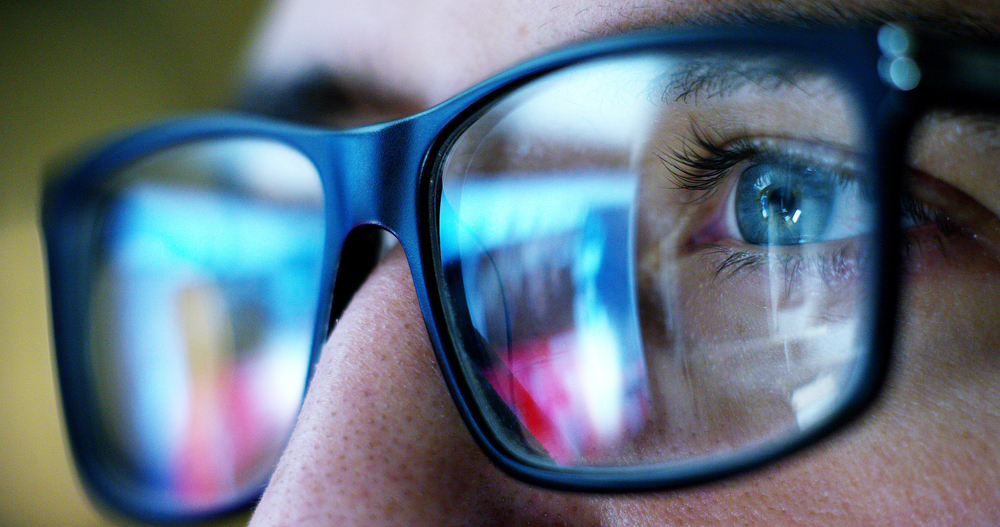
The Toxic Cost of Cheap Usernames
Toxicity in video games, acting in a rude, abusive, bullying, or deliberately losing manner, ruins competitive team-based video game experiences for everyone involved.
August 12, 2024,
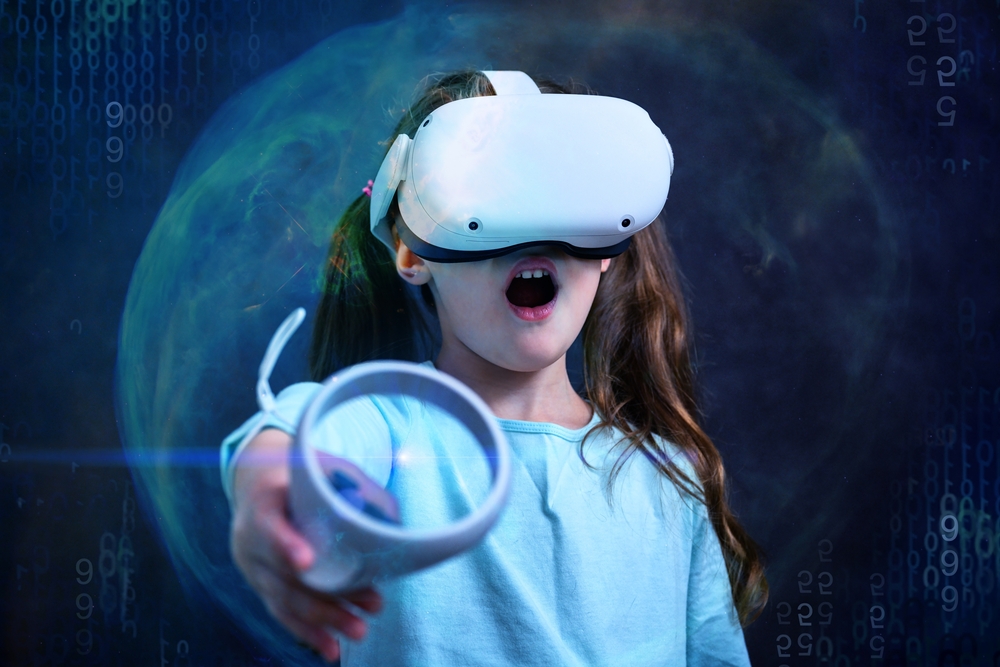
What Are the Points of Concern for Players about VR Games
In recent years, the VR boom has signaled fruitful applications in fields such as education, industry, animation, and entertainment.
August 22, 2024,
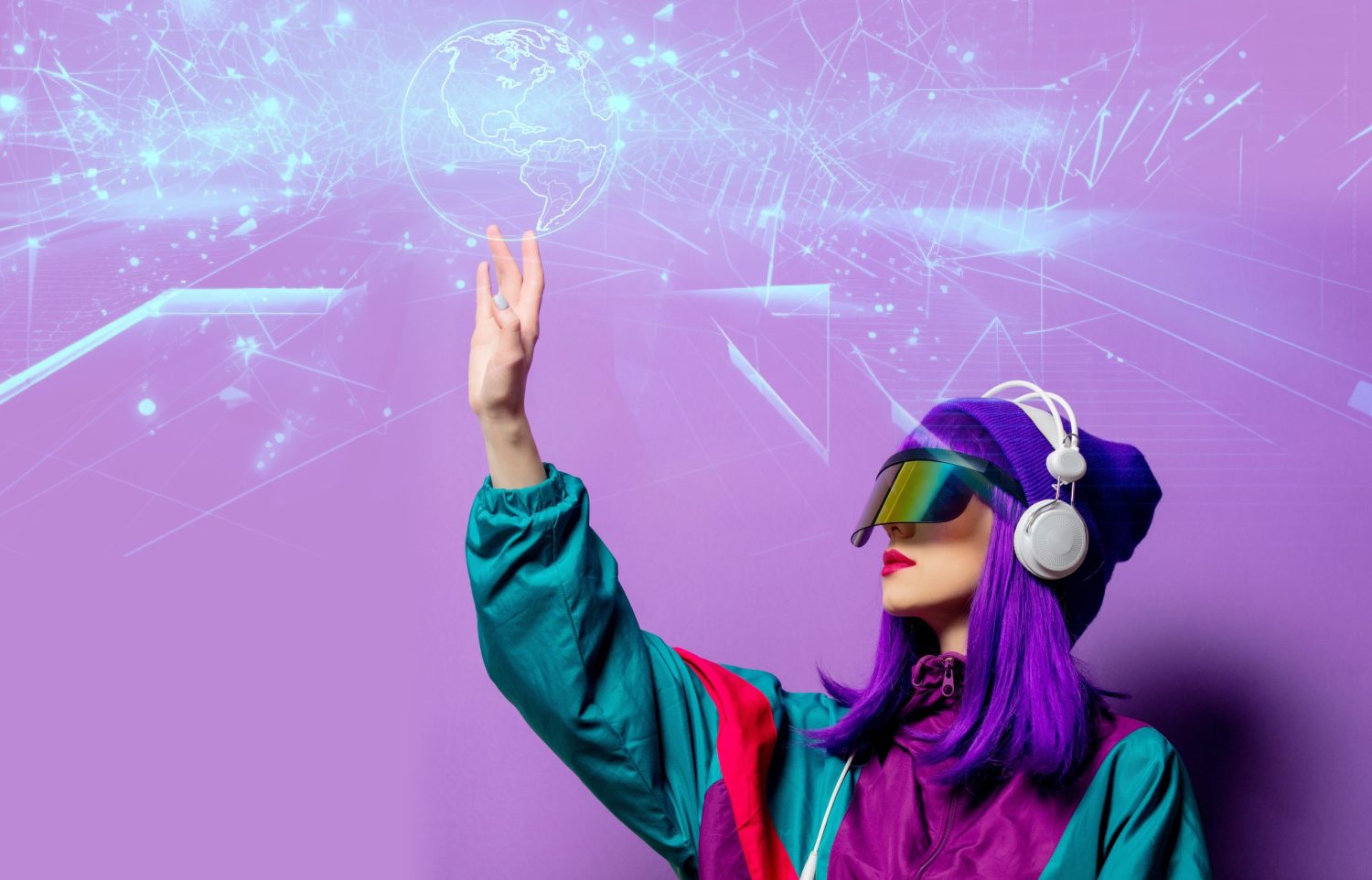
An Empirical Study of VR Head-Mounted Displays Based on VR Games Reviews
In recent years, the VR tech boom has signaled fruitful applications in various fields.
August 22, 2024,
